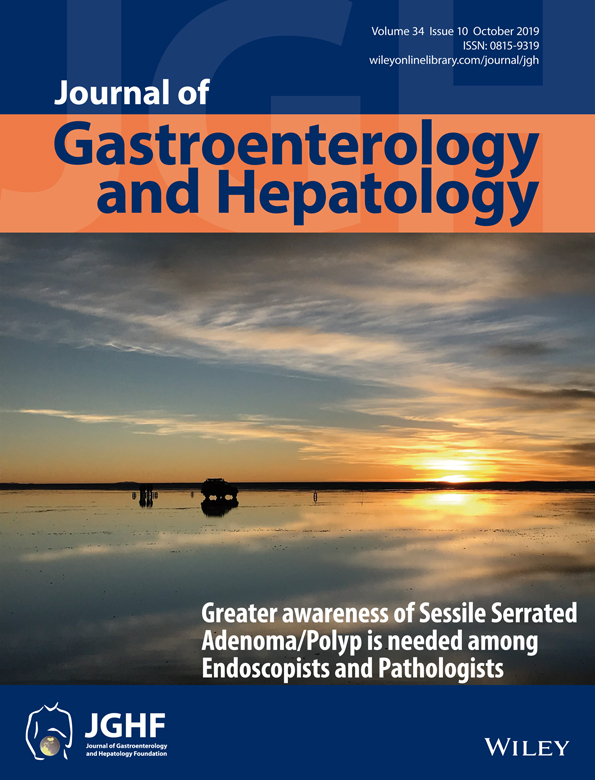Eradication rate of Helicobacter pylori reinfection in Korea: A retrospective study
Abstract
Background and Aim
Guidelines for selecting the eradication regimen for Helicobacter pylori reinfection remain unclear. This study aimed to evaluate the eradication rate of H. pylori reinfection in patients with a previous infection successfully eradicated with index triple therapy.
Methods
This was a single-center, retrospective case–control study. A total of 10 468 H. pylori-infected patients treated with proton-pump inhibitor-based triple eradication therapy at a tertiary medical institution between 2005 and 2016 were enrolled. We reviewed the medical records of the enrolled patients and compared the treatment outcomes in those with H. pylori reinfection after a successful eradication.
Results
Helicobacter pylori infection was successfully eradicated with the index triple therapy in 7770 patients (74.2%). Among 3567 patients followed up for > 1 year, H. pylori reinfection occurred in 420 (11.8%; 3.06% per person-year) during a median follow-up of 39.1 months (interquartile range, 23.5–58.7 months). Of these patients, 164 received eradication therapy for reinfection (triple therapy in 102 and quadruple therapy in 62) and had follow-up data. Triple therapy showed an eradication rate of 78.4% for H. pylori reinfection, which was not significantly different from that of the index triple therapy (P = 0.394). Quadruple therapy for reinfection exhibited a better eradication rate (87.1%) than triple therapy but without statistical significance (P = 0.237).
Conclusions
Retreatment with triple therapy for H. pylori reinfection after successful eradication of prior infection showed comparable outcomes to the index triple therapy. Bismuth-containing quadruple therapy for reinfection tended to have a better eradication rate than did triple therapy.




